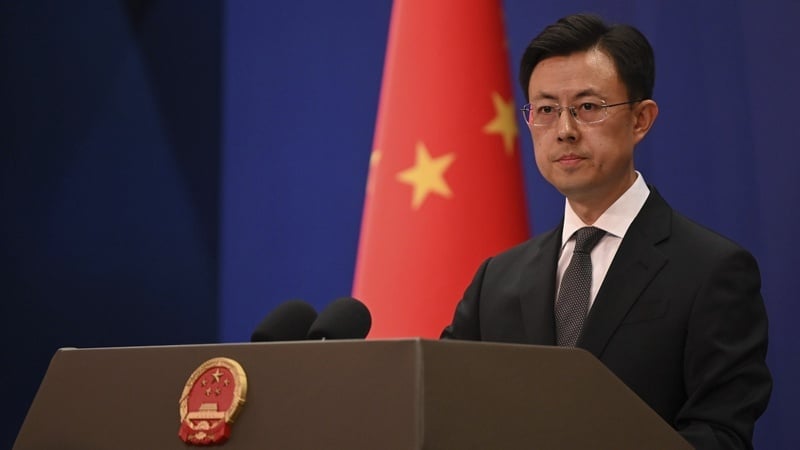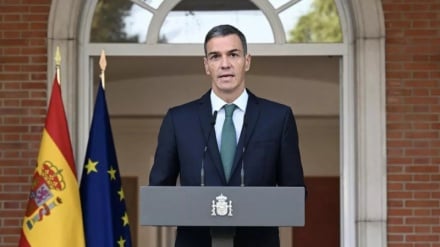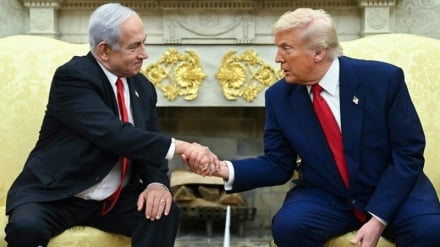What was China’s response to Trump’s accusations?
-

Spokesperson for China’s Ministry of Foreign Affairs, Guo Jiakun
Pars Today – In response to Trump’s claims, China stated that the expansion of its cooperation with other countries does not pose a threat.
According to Pars Today, a spokesperson for China’s Ministry of Foreign Affairs, reacting to remarks by U.S. President Donald Trump, said that Beijing’s growing partnerships with other nations are not a threat to any third country.
In a press conference, Guo Jiakun responded to U.S. President Donald Trump’s remarks alleging a “conspiracy” between Beijing, Moscow, and Pyongyang, stating: “China’s development of relations with other countries is never a conspiracy or a threat to any third country.” He emphasized, “China never targets any third country in the course of developing its diplomatic relations.”
Meanwhile, a Russian presidential aide on foreign policy responded to Trump’s comments regarding the presence of leaders from China, Russia, and North Korea in Beijing, saying: “None of the leaders there were organizing any conspiracy, nor did they even have such a thing in mind.”
Chinese President Xi Jinping, along with Russian President Vladimir Putin and North Korean leader Kim Jong Un, participated on Wednesday in a major military parade in Beijing marking the 80th anniversary of the end of World War II.
At the same time, U.S. President Donald Trump expressed concern over the closeness of the leaders of China, Russia, and North Korea during the Victory Day parade in Beijing, claiming they were “plotting against America.” In a post on his social media platform, Truth Social, Trump wrote: “Please convey my warmest regards to Vladimir Putin (President of Russia) and Kim Jong Un (Leader of North Korea) while you are plotting against the United States of America.”
The grand ceremony marking the 80th anniversary of the victory in China’s war of resistance against Japanese aggression and the global anti-fascist war was held on Wednesday at Tiananmen Square in central Beijing.
The event, attended by leaders and senior officials from around 25 countries, including Masoud Pezeshkian, the President of the Islamic Republic of Iran, began with a speech by Chinese President Xi Jinping. It was followed by a military parade featuring thousands of troops, maneuvers involving over 100 aircraft, and a display of hundreds of ground military units from China’s armed forces.
During China’s Victory Day parade, the country showcased a wide range of its offensive and defensive military capabilities across drone, air, naval, and ground forces. Attendees witnessed flights by various fighter jets and bombers.
For the first time, Beijing displayed its DF-5S intercontinental strategic nuclear missile, which is liquid-fueled and has a range that covers the entire globe. Additionally, China presented its strategic land, naval, and air forces as a nuclear triad for the first time in a military parade in Beijing.
Western analysts have acknowledged that China’s grand parade was meticulously designed to send a clear political message to the United States and its allies. In his opening speech, Xi Jinping warned that the world faces a “choice between peace and war” and emphasized that China will never fear any bullying government.
The Guardian interprets these remarks as a reference to the U.S. and its partners. Xi also reminded that the Chinese people have always been united and resilient in the face of their enemies.
The American newspaper The New York Times also examined the implications of China’s Victory Day military parade, noting that through the event, China demonstrated to the world that an alternative to U.S. leadership exists.
In a report titled “China, Russia, Iran, and North Korea Recognize Their Position”, it stated: “When Xi Jinping led a grand military display on Wednesday in Beijing, the event was about more than just showcasing fighter jets and missiles.”
Surrounded by the leaders of Russia, Iran, and North Korea, Xi Jinping was sending a signal to the world that a reliable alternative to U.S. leadership exists, and that China, in coordination with these countries, can reshape the existing international order and stand firmly against the principal architect of the current global system—America.
Although just two months ago some observers dismissed the understanding among these four countries (China, Russia, Iran, and North Korea), often referred to as the “Axis of Transformation,” as dead or exaggerated, this display of unity may now be seen as significant.
According to Western analysts, China’s grand parade in Beijing was not only a demonstration of military power but also a stage for showcasing political unity among China, Russia, and North Korea—a move that openly challenged Western dominance.


